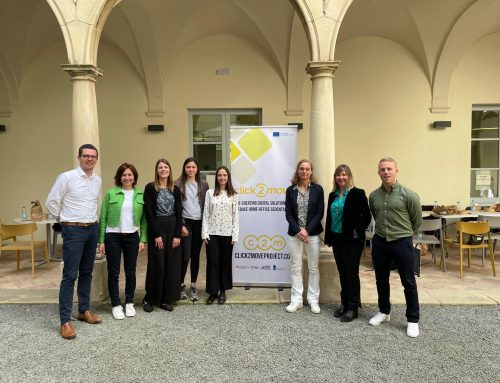November 2022
Click2move consortium has delivered the first report to the European Union that was focused on the review of health-enhancing physical activity (HEPA) practices for the reduction of sedentary behaviour for (home-) office workers.
This report is part of the second work package “Co-creation of digital-based and cross-cultural strategies for active and healthy working from home”.
The goals of this report was twofold:
- Identify HEPA practices for the reduction of SB attainable in a home office context; and
- Explore digital-based interventions/programmes to reduce sedentary behaviour among (home-) office workers through a systematic review.
What are the main results?
From the 756 workplace PA initiatives identified in the scoping review, a total of 425 initiatives were included in the home office context analysis. They were classified into one or various categories of the seven policy dimensions described by the BCW. Most initiatives were components of Regulation (n=217), Environment and Social Planning (n=145), Communication and Marketing (n=114), and Service Provision (n=88). The rest correspond to Guidelines (n=18), Fiscal measures (n=15), and Legislation (n=8). From the total workplace initiatives, 56% may be implemented in a home-office context. They were classified into the seven policy dimensions of the BCW, being regulation, environment and social planning, communication and marketing, and service provision the most represented. Through overall policies, the behavioural change features more repeated were the workers enablement and the environment structuring. Digital technology elements appeared only in the 14% of potential home-office initiatives.
Regarding the systematic review, potential digital-based interventions/programmes to reduce SB among (home-) office workers, were explored. A total of 21 studies were included in the qualitative synthesis. Studies were undertaken in a wide range of countries. The most represented countries were United Kingdom (n=7), and Australia (n=4). European countries such as Spain, Denmark, Belgium, Italy, Netherlands and Ireland are also represented (one study per country). Studies reviewed were conducted in office-based work adults. The 21 studies included showed a wide variety of the technological features. The most represented features were information delivery through texts, videos, emails, text messages, and new letters, and mediated organizational support and social influences such as environmental planning, managers support and challenges or competitions. as weekly emails with tips and guidelines to increase standing at work, and scheduled prompts such as received a prompt bubble indicating it was time to take a break from sitting. Other features represented were scheduled prompts automated tailored feedback and passive data collection with in-built or external devices and digital log for self-monitoring. Regarding the behavioural change features overall interventions combine multiple features, being education, persuasion and training the most represented though the studies.
Both approaches contribute to the understanding of potential HEPA strategies and digital solutions for reducing sedentariness among (home-) office workers in the hybrid paradigm established at the European region. This is a first necessary step due the risen concern about the increase of employee’s sedentariness and the consequences that may have on work performance and well-being.
You can see the report in the following website section.










